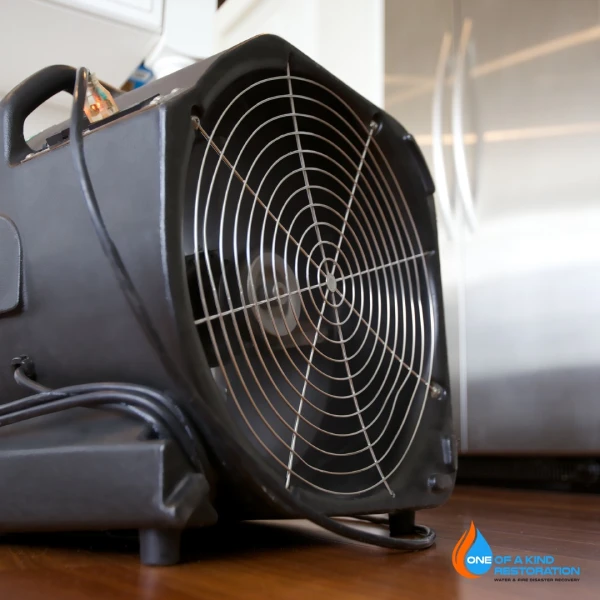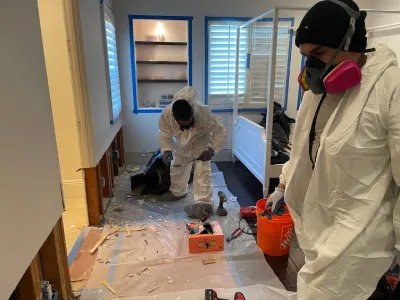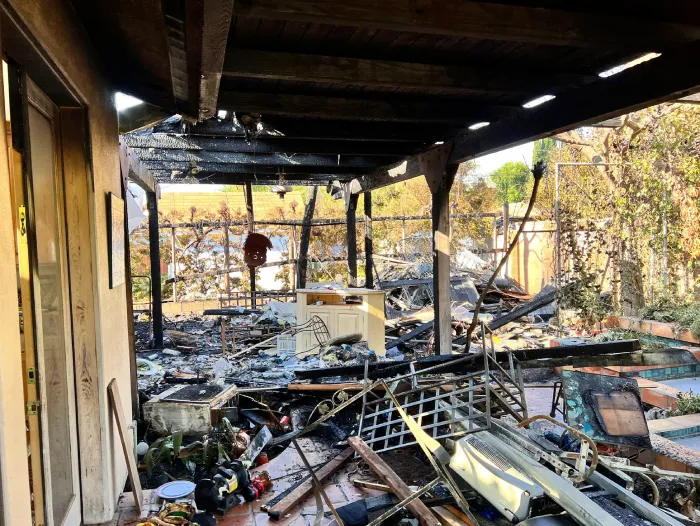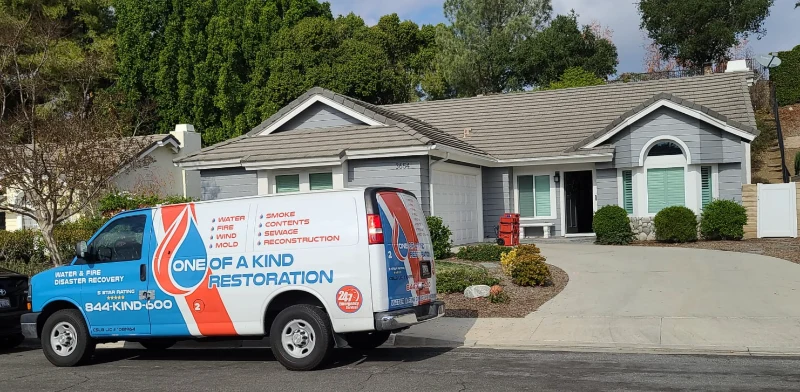Flood damage can be devastating and overwhelming for homeowners, particularly in high-risk areas like Los Angeles. The path to restoring your home or business requires the expertise, compassion, and prompt action of professionals. This guide highlights the essential steps to a fully successful restoration, with a focus on the professional aspects you must take when dealing with Los Angeles flood damage.
A Common Understanding Flood Damage
The aftermath of flood damage is a daunting task that extends far beyond the initial water intrusion. It’s not just about the visible damage to your property, but also the potential issues that can arise if the damage is not properly addressed. Flood damage can compromise your home’s structural integrity, endangers electrical systems, and exposes you and your loved ones to waterborne pathogens and mold.
Understanding the Nature of Water Damage
Categories of Water
Not all floodwaters are the same. They’re categorized into three types: clean water (Category 1), gray water (Category 2), and black water (Category 3, which includes sewage and contaminated water). The type of water involved significantly affects the cleanup process, health risks, and the urgency of addressing the damage.
Rapid Deterioration
Water damage worsens significantly over time. What starts as a clean water issue can quickly escalate to a more serious category if not addressed promptly. Materials absorb water, leading to swelling, warping, and the breakdown of substances like drywall and wood.
Hidden Damage
Water has a way of getting into unexpected places, leading to hidden damage in walls, floors, and crawl spaces. This unseen damage can compromise structural integrity and lead to mold growth, requiring thorough inspection and mitigation.
To tackle these challenges, it’s essential to hire professionals who specialize in flood and water damage restoration. With years of extensive experience in mitigating risks, utilizing advanced technology, and ensuring thorough health-conscious cleanups, One of A Kind Restoration is your go-to partner for all flood damage restoration needs.
Immediate Steps After a Flood
Safety Assurance: Prioritizing safety, One of A Kind Restoration advises homeowners to avoid entering their property until it’s deemed safe, with particular attention to electrical and gas hazards.
Avoid Electrical Hazards:
Do not enter your home if it’s still flooded or if there’s standing water near electrical equipment. Turn off the electricity at the main breaker if you can do so safely.
Beware of Gas Leaks:
If you smell gas or hear a hissing noise, leave immediately and contact the gas company.
Wear Protective Gear:
When you do enter, wear waterproof boots and gloves to protect against contaminated water.
Damage Documentation: Capturing the extent of the damage through photographs and videos is crucial. This documentation is essential for insurance claims and is something One of A Kind Restoration can assist with, ensuring you have all the necessary evidence.
Take Photos and Videos:
Before you clean up, document all damages with photos and videos. This is crucial for insurance claims and for any government assistance you might seek.
List Affected Items:
Make a detailed list of damaged property, including descriptions, brand names, and the purchase date and price if known.
Professional Engagement: Time is of the essence. Contacting your home insurance and also a licensed and insured restoration company promptly allows the experts to begin the restoration process immediately. This will reduce long-term damage and expedite your home’s recovery.
Report Promptly:
Notify your insurance company as soon as possible. The sooner you file a claim, the quicker the process can start.
Understand Your Coverage:
Ask about your policy’s coverage, including flood damage, temporary living expenses, and the claims process.
Protect Your Health:
Avoid Contaminated Water: Floodwater can contain sewage, chemicals, and other hazardous materials. Use clean, safe water for bathing, drinking and cleaning.
The Flood Cleanup Process
Water extraction then commences, utilizing powerful pumps to remove standing water. Subsequently, the drying process involves industrial-grade fans and dehumidifiers, a critical step to prevent mold proliferation. Finally, cleaning and sanitizing all affected areas ensure the elimination of contaminants, making your home safe for return.
Remove Water:
Use pumps or wet vacs to remove standing water. Consider hiring a professional if the damage is extensive.
Dry Out Your Home:
Open windows and doors and use fans and dehumidifiers to aid in drying out your home.
Salvage What You Can:
Clean and disinfect anything that got wet but looks salvageable. However, throw out anything porous that absorbs water, like mattresses, stuffed toys, etc
Flood Damage Repair
Foundation Inspection:
The foundation is the bedrock of your home’s safety and stability. Floodwaters can undermine the foundation, leading to cracks, settling, or even shifting. A professional engineer or a specialized foundation repair service should assess any potential damage. They can determine the extent of repairs needed or if more extensive measures are required, such as underpinning the foundation to ensure stability.
Electrical System Safety:
Floodwater and electricity create a dangerous combination. Even after waters recede, the risk of electrical fires or shock remains if the system isn’t properly inspected. A licensed electrician should examine the wiring, outlets, fuse boxes, and any electrical appliances that were exposed to water. They can identify parts that need to be dried out, replaced, or completely rewired to prevent future hazards.
Plumbing Integrity:
Plumbing systems can also be affected by floodwaters. Pressure changes and debris can cause pipes to crack or become dislodged. A professional plumber can perform pressure tests and use cameras to inspect pipes for damage, ensuring that the water supply and drainage systems are intact and free of contaminants.
Heating and Cooling Systems:
HVAC systems are susceptible to damage from flooding, potentially impacting not just their functionality but also the quality of the air in your home. An HVAC technician should inspect furnaces, air conditioners, ductwork, and filters for water damage, contamination, or the need for replacement to maintain a safe and comfortable living environment.
Seeking Professional Help
Specialized Contractors:
Contractors who specialize in flood damage repair have the expertise and equipment necessary to tackle the complexities of flood recovery. They can offer a comprehensive assessment of the damage, prioritize repairs, and ensure that the restoration process is carried out efficiently and effectively.
Coordination with Insurance Claims:
Experienced contractors can also provide detailed estimates and documentation required for insurance claims. They often work directly with insurance companies, easing the claims process for homeowners and ensuring that repairs are covered under the policy’s terms.
Compliance and Permits:
Repairing flood damage often requires navigating local building codes and securing the necessary permits. Professional contractors are familiar with these regulations and can ensure that all repairs meet the required standards, avoiding potential issues with non-compliance.
Long-term Solutions:
Beyond immediate repairs, professionals can advise on long-term mitigation strategies to reduce the risk of future flood damage. This might include waterproofing basements, installing sump pumps with battery backups, or modifying landscaping to improve drainage around the property.
Starting repairs after a flood involves much more than just fixing what’s broken. It requires a strategic approach that prioritizes safety, involves specialists for each aspect of your home, and addresses both the visible and unseen damages. By focusing on structural integrity and seeking the right professional help, homeowners can navigate the recovery process more smoothly, ensuring their home is safe, secure, and better prepared for any future challenges. We’re not just restoring homes; we’re rebuilding lives, one unique project at a time. Visit oneofakind.pro for more information.






